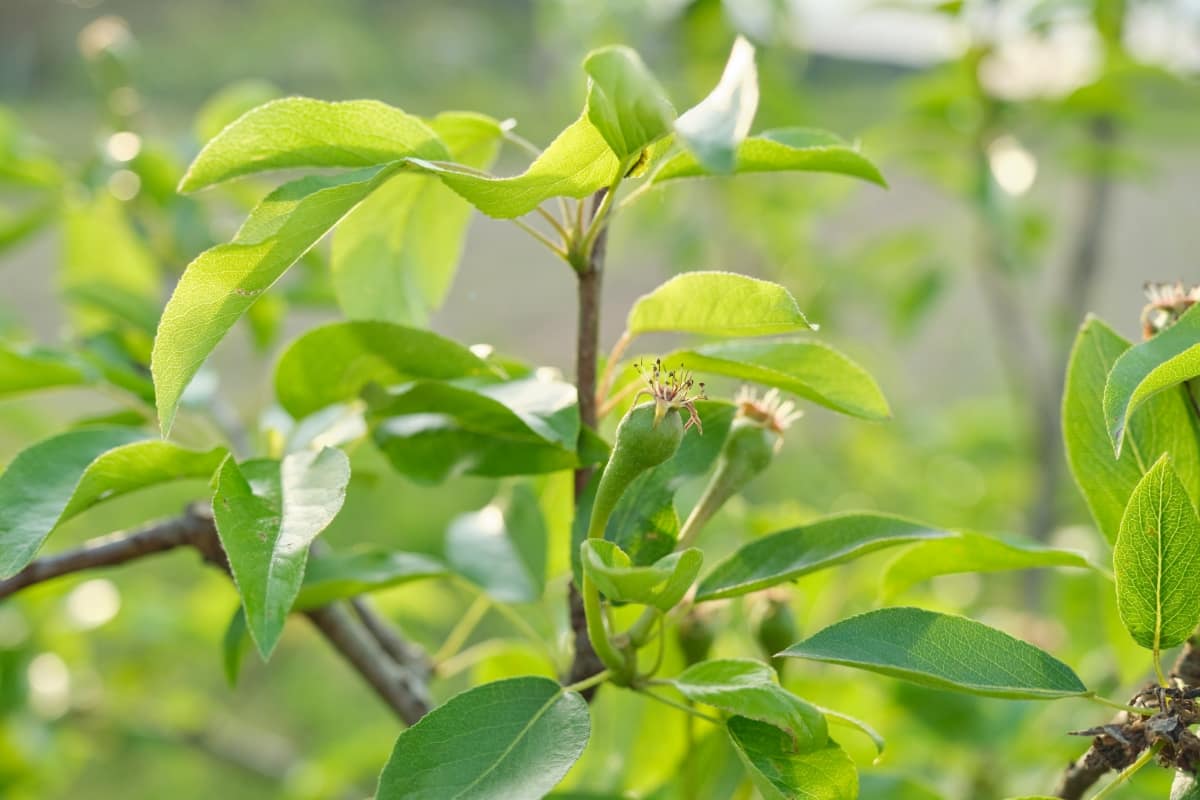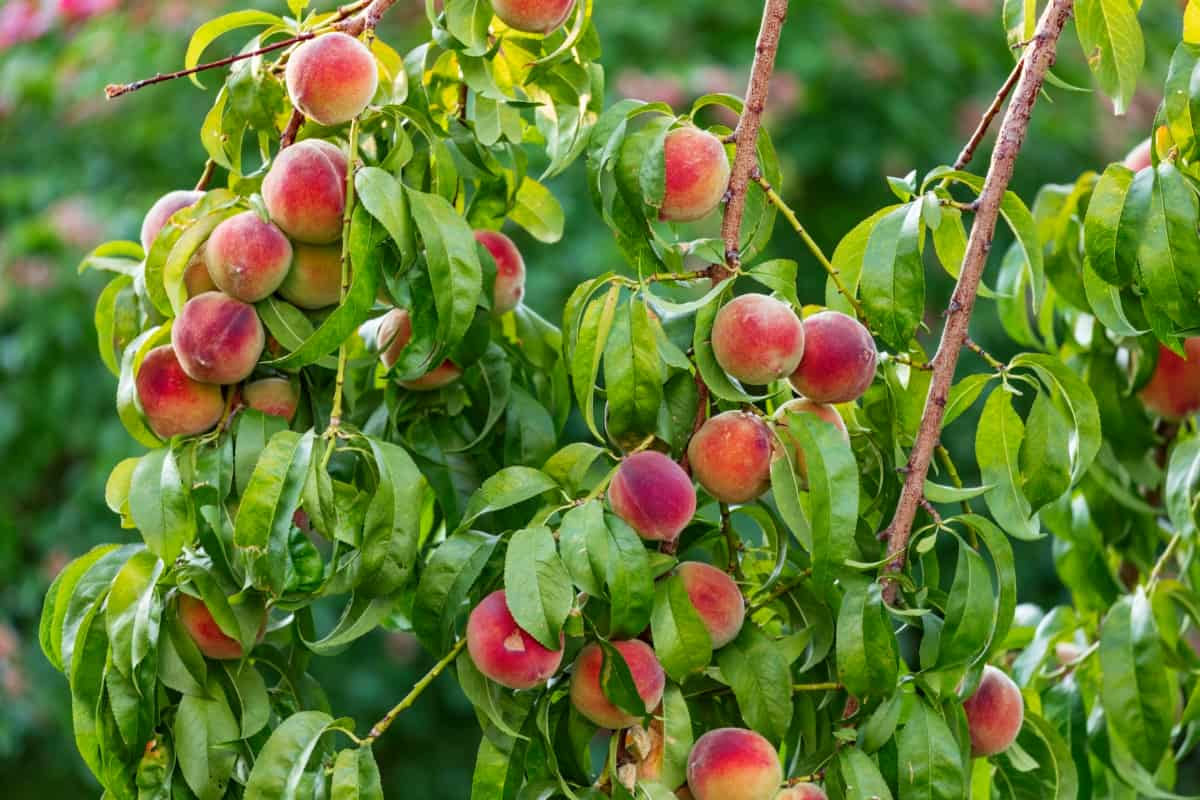The lack of flowers on your fruit tree can be frustrating but don’t worry, and there are several solutions. Understanding why your fruit tree is not producing flowers is the first step toward addressing the issue. Fruit tree bloom failure can be frustrating, but knowing the reasons behind it can help you address the issue effectively. It can be frustrating when your tree doesn’t produce the blossoms that will eventually turn into delicious fruits. Several factors could be at play here, causing your fruit tree to hold back on flowering.

Fruit Tree is Not Producing Flowers
Inadequate Sunlight
Maximizing Sun Exposure
Inadequate sunlight might be the cause behind their flower production. To help them thrive, consider maximizing sun exposure by trimming nearby branches or relocating shaded trees to sunnier spots. Sunlight is like fuel for fruit trees—it powers their growth and flowering potential. By ensuring they get enough sunshine, you’re giving them the energy boost they need to bloom beautifully.
Relocating Shaded Trees
If you notice certain areas of your garden are casting shadows over your fruit trees, it might be time to do some strategic pruning. Clearing away obstacles blocking the sunlight can work wonders for encouraging those precious blooms to make an appearance.
Improper Pruning
Pruning at the Right Time
Pruning at the right time can make a significant difference in your fruit tree’s ability to produce flowers. Knowing the ideal time to prune ensures that you won’t inadvertently remove next season’s blooms.
Pruning Techniques for Flowering
Pruning techniques for flowering trees should focus on removing diseased branches, shaping the tree for optimal sunlight exposure, and encouraging new growth. Proper cuts and angles are essential to promote healthy flower production. Avoid over-pruning as it can stress the tree and inhibit flower development. Instead, follow the recommended guidelines for your specific fruit tree variety. Understanding the unique needs of your tree will help you implement appropriate pruning techniques for maximum bloom potential.
Nutrient Imbalance
Soil Testing and Amendment
The lack of flower production could be due to a nutrient imbalance in the soil. There are ways to address this issue and get those flowers blooming again. The key step is to conduct a soil test to determine exactly what nutrients your trees may be lacking. This will help you tailor your fertilization plan accordingly, ensuring that they receive the right balance of essential minerals.
Balanced Fertilization Practices
Balanced fertilization practices are crucial for promoting healthy flower production in fruit trees. By providing them with the necessary nutrients in appropriate quantities, you can encourage robust growth and abundant blooms. Consider incorporating organic amendments into the soil to improve its overall health and fertility. This can help create a better environment for your fruit trees, allowing them to thrive and produce beautiful flowers year after year.
In case you missed it: Top 10 Scented Flowers to Grow in Home Gardens in India

Water Stress
Proper Irrigation Techniques
Water stress can be a major reason why your fruit tree is not producing flowers. Proper irrigation techniques are essential to ensure your tree gets the right amount of water it needs. Overwatering can affect root rot, while underwatering can cause stress and hinder flower production. To avoid water stress, make sure you are watering your fruit tree deeply but infrequently. This encourages root growth and helps the tree access water more efficiently.
Mulching to Retain Soil Moisture
Mulching around the tree base can also help retain soil moisture by preventing evaporation. Consider using organic mulch to conserve moisture levels in the soil. Mulching not only retains moisture but also suppresses weed growth, regulates soil temperature, and improves overall soil health.
Incorrect Planting Zone
Choosing Climate-Appropriate Varieties
Choosing varieties that thrive in your specific planting zone is crucial for successful flower production. Each type of fruit tree has its preferences when it comes to sunlight and soil conditions. By selecting a variety that matches your climate, you increase the chances of seeing beautiful blooms in your garden.
Microclimate Adjustment Strategies
Consider creating microclimates around the tree by using protective structures or planting companion plants that offer shade or wind protection. By adjusting to the unique conditions of your planting zone and implementing microclimate adjustments, you can encourage your fruit tree to flourish and produce an abundance of flowers.
Pest and Disease Pressure
Integrated Pest Management (IPM)
Integrated Pest Management (IPM) is a holistic approach that emphasizes prevention and environmentally friendly solutions over harsh chemicals. By implementing IPM practices, you can effectively manage pests while minimizing harm to beneficial insects.
Disease Identification and Treatment
Identifying diseases early on is crucial in preventing them from spreading throughout your orchard. Regularly inspect your fruit trees for any signs of infection, such as unusual spots, discoloration, or wilting leaves. Once identified, promptly treat the disease using appropriate methods like pruning infected branches or applying targeted fungicides.
Remember that prevention is important when it comes to managing pest and disease pressure. Implementing cultural practices like proper sanitation, maintaining good air circulation around trees, and regular monitoring can help reduce the likelihood of infestations taking hold in your orchard.
Age of the Tree
Understanding Juvenile Phase
When it comes to fruit trees not blooming, age matters. Young trees need time to mature before they start producing flowers and fruits. Understanding the juvenile phase is crucial in nurturing your tree properly. Provide the necessary care and attention during this early stage of growth.
Patience with Young Trees
Patience is key when dealing with young trees. It takes time to establish strong root systems and reach reproductive maturity. Be patient and allow nature to take its course. Don’t rush the process or expect immediate results. Give your young tree the time it needs to develop into a productive member of your garden or orchard.
Rootstock Incompatibility
Selecting Compatible Graft Combinations
Choosing the right graft combinations is key to ensuring your tree thrives. Selecting compatible rootstocks ensures vigor and optimal bloom potential. Before planting, research which rootstock works best with your desired fruit variety. Matching characteristics like growth rate and soil preference are crucial for successful grafting.
Rootstock Selection for Vigor and Bloom
Rootstock selection plays a main role in determining the long-term success of your fruit tree. Invest time in understanding compatibility for a flourishing orchard that bursts with blooms come springtime. Consider factors like disease resistance and nutrient uptake when selecting a rootstock. A healthy union between scion and rootstock will promote overall tree health and flower production.
In case you missed it: How to Use Neem Oil on Rose Plants: Best Natural Way to Eradicate Rose Pests

Environmental Stress
Protection from Extreme Weather
As a fruit tree enthusiast, it’s crucial to understand that environmental stress can significantly impact your trees’ ability to bloom. Protection from extreme weather is key to ensuring the health of your fruit trees. Harsh conditions like frost, excessive heat, or strong winds can hinder flower production.
Adjusting Care with Seasonal Changes
Adjusting care with seasonal changes is essential for maintaining optimal growing conditions for your fruit trees. Be mindful of temperature fluctuations and adapt your watering and fertilization routines accordingly. During times of drought or intense heat, providing extra hydration and shade can help alleviate stress on the trees. By being proactive in protecting your fruit trees from extreme weather events and adjusting care based on seasonal variations, you set them up for success in blooming beautifully year after year.
Lack of Proper Care
Regular Monitoring and Maintenance
Regular monitoring and maintenance are controlling flowering issues in fruit trees. Make sure to routinely check for any signs of pests or diseases that could be affecting your tree’s ability to produce flowers. Proper pruning and fertilization throughout the year can also make a significant difference in encouraging blooms.
Seasonal Care Guide for Fruit Trees
Creating a seasonal care guide for your fruit trees can help ensure they receive the specific care they need during different times of the year. Adjusting watering schedules, mulching, and protecting from extreme weather conditions are all part of maintaining healthy and blooming fruit trees. Remember, taking small steps towards consistent care can lead to rewards when it comes to enjoying beautiful blossoms on your fruit trees.
In case you missed it: How to Use Baking Soda to Control Powdery Mildew on Roses: Benefits and Application

Conclusion
Many gardeners face the frustration of their fruit trees not producing flowers. By addressing these potential issues, you can help encourage your fruit tree to start blooming and eventually bear delicious fruits for you to enjoy. If your fruit tree is not producing flowers as abundantly as you’d like, there are ways to improve flower production in trees. Understanding the age of your tree and being patient during its juvenile phase is essential since young trees may take time to establish before flowering profusely.
- Feed Your Flock for Less: Top 10 Tips to Save on Chicken Feed
- Ultimate Guide to Ossabaw Island Hog: Breeding, Raising, Diet, and Care
- Hatching Answers: The Top 10 Reasons Your Chickens Aren’t Laying Eggs
- Eggs and Economics: Breaking Down the Cost of Raising Backyard Chickens
- Defend Your Greens: Proven Methods to Keep Iguanas Out of Your Garden
- Ultimate Guide to Cinnamon Queen Chicken: A Comprehensive Guide for Beginners
- Ultimate Guide to California Tan Chicken: Breeding, Raising, Diet, Egg-Production and Care
- Ultimate Guide to Marsh Daisy Chicken: Breeding, Raising, Diet, and Care
- 10 Types of Chicken Farming Businesses You Can Start for Profits